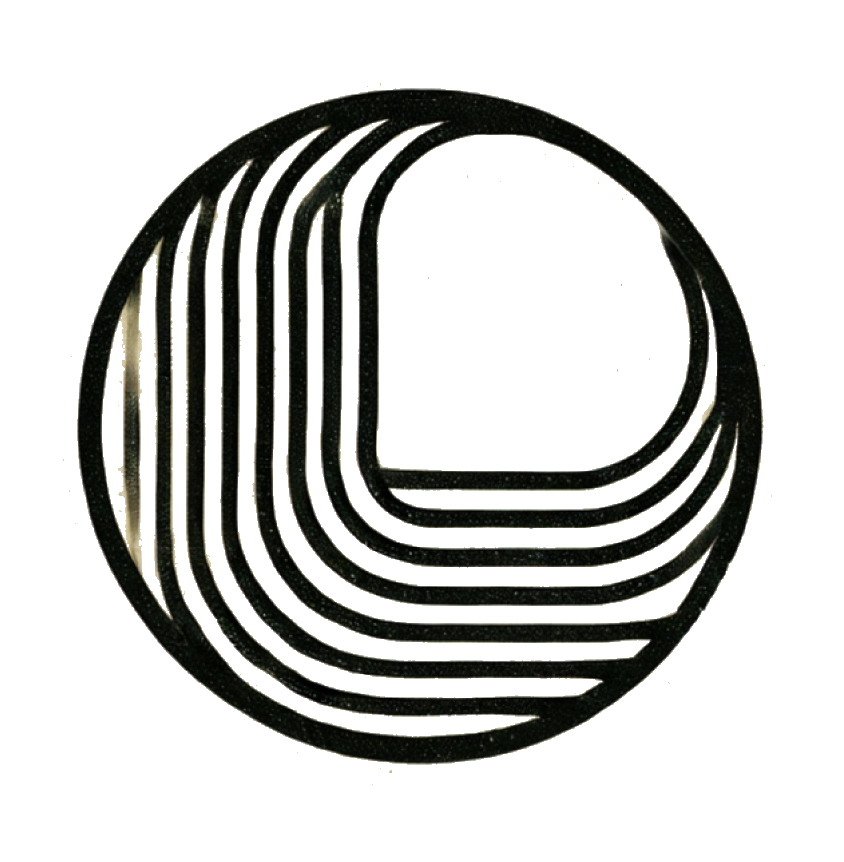Advanced Shadow Work Techniques: 7 Proven Methods for Deep Integration (Journaling, Dream Analysis & Creative Expression)
Discover advanced shadow work techniques to deepen your self-integration practice — including deep journaling, dream analysis, creative expression, body awareness, active imagination, and archetype mapping.

Most people think of shadow work as simply “facing your dark side.”
In truth, it’s much more — it’s a transformative dialogue with your unconscious, a descent into the hidden emotions, fears, and unexpressed potentials shaping your daily life.
Carl Jung, who coined the term shadow, wrote:
Want to go deeper? Our 100+ shadow work prompts guide covers relationships, triggers, self-sabotage, and more.
“Until you make the unconscious conscious, it will direct your life and you will call it fate.”
True shadow integration requires depth, courage, and method. For advanced shadow work practitioners, this means moving beyond surface reflection into multi-dimensional exploration — through journaling, dream analysis, somatic release, and symbolic creativity.
This guide introduces seven powerful shadow work techniques to help you not just “understand” your shadow, but embody and transform it.
🌒 1. Deep Journaling: Dialogue with the Shadow Self
Shadow work journaling is the cornerstone of integration. But for advanced practitioners, it’s not about documenting feelings — it’s about uncovering the voice behind them.
How to Practice:
- Begin with a precise question:
- “What am I most afraid to feel?”
- “What part of myself do I condemn in others?”
- Free-write without censorship for 15–20 minutes.
- When resistance arises, stay with it. That tension is the threshold of transformation.
Switch perspectives. Let your shadow speak directly:
“I am the part of you that’s tired of pretending.”
Pro Tip:
After each session, write a “mirror response” from your conscious self — not to fix, but to acknowledge. Integration begins through dialogue, not domination.
Shadow Work Journal Prompts for Advanced Practice:
- What emotion most often hijacks my rationality?
- What truth about myself do I avoid out of fear of rejection?
- When I’m triggered, what core belief is being threatened?
“The shadow is not a problem to solve, but a presence to meet.”
🌘 2. Dream Analysis: Reading the Language of the Unconscious
Dreams are the direct expression of the shadow self — raw, symbolic, and nonlinear. For those deep in the path of shadow work, dreamwork becomes a sacred text written by the soul itself.
How to Practice:
- Keep a dream journal at your bedside and record immediately upon waking.
- Write without interpretation at first; capture imagery, sounds, and emotions.
- Afterward, reflect using these questions:
- What feeling lingers most strongly?
- Who or what felt threatening or alluring?
- Which elements repeat across dreams?
Integrative Method:
Instead of decoding like a puzzle, engage your dream through active imagination: visualize returning to the dream and asking each symbol what it represents.
Example:
A locked door may not symbolize “barriers” — it may be your shadow asking: What part of you is not ready to enter yet?
Advanced Tip:
Over weeks, track archetypal patterns — the anima, animus, trickster, or wise elder. These are recurring psychic figures guiding integration through the dreamscape.
🌗 3. Creative Expression: Transforming the Shadow Through Art
When language collapses, art speaks. Creative expression in shadow work bridges emotion and symbol — transforming the unspeakable into visible form.
Ways to Practice:
- Paint your emotion before naming it.
- Move intuitively — dance, shake, or breathe your feeling.
- Speak or sing freely without worrying about “sounding good.”
Shadow work through creative expression is not aesthetic — it’s alchemical. By giving image and rhythm to repression, you transmute energy into awareness.
Try this:
“Draw what your fear looks like — then draw how it changes once it’s witnessed.”
This practice draws on Jung’s active imagination, where artistic process becomes dialogue with the unconscious.
🌕 4. Body Work: Releasing the Shadow’s Tension
The shadow doesn’t just live in your mind; it resides in your fascia, breath, and nervous system.
Every contraction or chronic ache can hold a story your conscious mind has forgotten.
How to Practice:
- Begin with somatic awareness: scan your body from head to toe.
- When you sense constriction, pause and breathe deeply into it.
- Ask: “If this part of me could speak, what would it say?”
- Allow any impulse — trembling, sighing, crying — to emerge naturally.
Over time, this becomes a shadow somatic practice: your body becomes the oracle, not the obstacle.
Integrations for Advanced Practice:
- Somatic shaking or TRE (Tension Release Exercises)
- Yin yoga for emotional release
- Breathwork and cold exposure for integration after shadow sessions
When the body relaxes, the unconscious loosens. That’s when old stories begin to rewrite themselves.
🌔 5. Active Imagination: Dialogue with Inner Figures
One of Jung’s most advanced techniques, active imagination bridges waking and dream states to converse with your unconscious.
Unlike meditation, the goal isn’t silence — it’s engagement.
How to Practice:
- Enter a calm, meditative state.
- Visualize a sacred inner space — a cave, temple, or forest clearing.
- Invite a figure from your psyche to appear — your shadow, inner critic, or child.
- Ask: “What do you want from me?”
- Let the dialogue unfold — verbally or through writing/drawing.
The key is reciprocity: treat these figures as autonomous aspects of your psyche. Through continued interaction, integration occurs naturally.
“The privilege of a lifetime is to become who you truly are.” — Carl Jung
🌑 6. Archetype Mapping: Seeing the Shadow Through Roles
For advanced shadow work practitioners, archetype mapping reveals how your shadow hides in identity patterns.
You might unconsciously live as “The Hero,” “The Caretaker,” or “The Outsider” — each both light and shadow.
How to Practice:
- Identify 2–3 roles you often embody in relationships.
- Ask: “What wound or need sustains this archetype?”
- Then, explore its polarity. The “Hero” holds the “Failure,” the “Healer” hides the “Wounded.”
Example:
If you often fix others’ problems, your shadow may fear being helpless.
Journaling from the opposite archetype’s voice (“I’m tired of always saving everyone”) reveals suppressed truth and restores balance.
Archetype mapping transforms shadow work from pathology into pattern recognition — a lifelong map of inner wholeness.
🌕 7. Shadow Visualization Meditation
A direct encounter method for deep shadow work.
This visualization allows you to meet your shadow without judgment — through imagination and energy awareness.
How to Practice:
- Sit comfortably and close your eyes.
- Visualize entering a dimly lit space — a cave, a mirror, or an ocean.
- Invite your shadow to appear. Observe its form, expression, and energy.
- Ask: “What do you need from me right now?”
- End by symbolically integrating it — a handshake, a hug, or merging lights.
This method bypasses the intellect and invokes psychic wholeness through experience rather than analysis.
🌙 Integrating Shadow Work Into Daily Life
Advanced shadow integration is not a one-time revelation but a daily practice of awareness.
You integrate not through intensity, but through presence.
When jealousy arises, when irritation spikes, pause and ask:
“What part of me is seeking acknowledgment right now?”
The work is not to eliminate darkness, but to make light spacious enough to contain it.
Combine multiple techniques weekly:
- Journal after dreams.
- Paint emotions following body scans.
- Map archetypes emerging from your creative or relational life.
The result is an ongoing conversation between your conscious and unconscious selves — a symphony rather than a battle.
🌿 Shadow Work with Life Note: Your AI Mirror for Depth Practice
Most journaling tools stop at self-reflection.
Life Note was built for transformation — to help you dialogue with the unconscious through mentors modeled after great thinkers like Carl Jung, Alan Watts, and Maya Angelou.
Inside Life Note, you can:
- Journal directly with AI mentors that challenge your shadow while guiding compassion.
- Track recurring patterns, themes, and emotional shifts over time.
- Integrate insights from your shadow work into goals and creative expression.
Unlike generic AI chat tools, Life Note doesn’t flatter the ego — it helps you see what your soul is asking to see.
Because shadow work isn’t about comfort — it’s about wholeness.
👉 Try Life Note — and let your journaling evolve into a mirror for inner truth.
💬 FAQ: Advanced Shadow Work Practice
1. What is shadow work in Jungian psychology?
Shadow work is the process of bringing unconscious emotions, patterns, and desires into awareness so they stop unconsciously directing your life. It’s rooted in Carl Jung’s depth psychology and aims for integration — not elimination — of your darker aspects.
2. What are the most effective shadow work techniques?
Advanced shadow work techniques include deep journaling, dream analysis, creative expression, body work, active imagination, archetype mapping, and shadow visualization. Each engages a different layer of the psyche — cognitive, emotional, somatic, or symbolic.
3. How often should I practice shadow work?
Consistency matters more than duration. For advanced practitioners, 20–30 minutes of deep work 3–4 times weekly is effective. Integrate daily awareness — observing projections, triggers, and patterns in real life.
4. Can shadow work be dangerous?
Shadow work can evoke repressed trauma. If you experience overwhelm, seek a therapist trained in somatic or depth psychology. Shadow work is safest when grounded in embodiment and supported relationships.
5. How can journaling deepen my shadow work?
Use shadow work journal prompts that provoke emotion and self-confrontation. Write dialogues between your conscious self and shadow, track patterns across time, and integrate reflections after dreams or body sessions.
6. What’s the difference between shadow work for beginners and advanced practitioners?
Beginners focus on awareness — noticing projections and triggers.
Advanced practitioners move toward embodiment, symbolic work, and real-time integration — transforming shadow energy into creativity, compassion, and authentic power.
✨ Closing Reflection
Shadow work is not about purification or positivity — it’s about wholeness.
When you meet your fear, jealousy, and shame with curiosity instead of avoidance, they become guides.
As Jung wrote,
“One does not become enlightened by imagining figures of light, but by making the darkness conscious.”
Integration is not about light defeating darkness — it’s about realizing they were never separate.
Explore More






